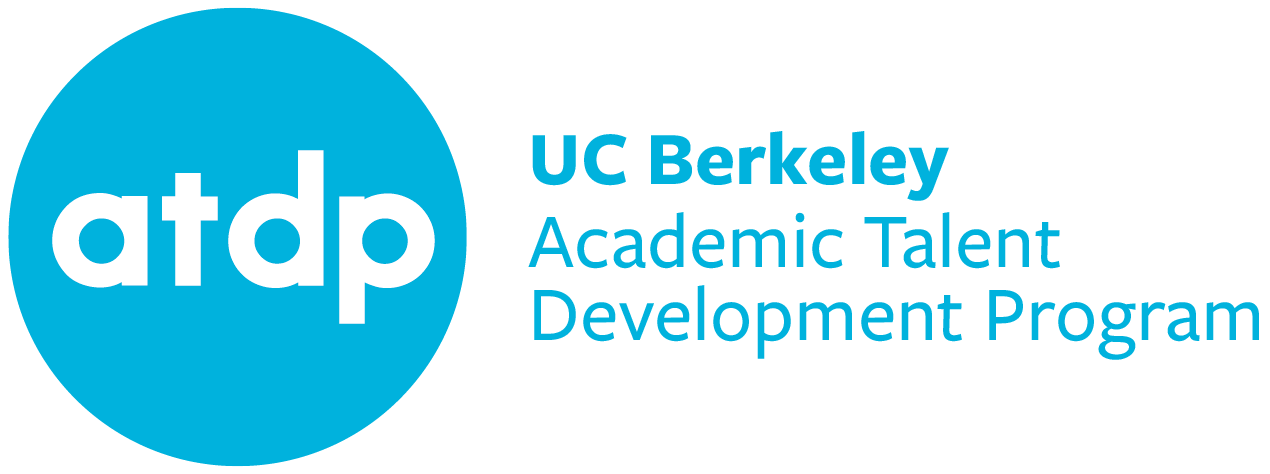Including ATDP courses on your college application
Last updated Aug 15, 2025
To the class of 2025: we hope many of you are already busy with the prospect of starting your college careers. We have important information about including your ATDP experiences on college applications.
For A-G approved courses completed after 8th grade, you can list ATDP on the UC application as though it were a high school you attended. Otherwise, if your school has granted credit for a course, it will appear on your regular high school transcript. On college applications, you should then list it as coursework completed at your high school.
When completing college applications, do not list UC Berkeley as a college, university, or other post-secondary institution you have attended. If you list ATDP courses as college courses, the colleges to which you are applying will ask you to provide a UC transcript; however, the UC Registrar’s office does not have ATDP records, and an ATDP final evaluation is not a UC transcript. ATDP offers high school-level courses, not college courses, taught at the honors or advanced level.
Click on the headings below to see detailed instructions for each application.
Applying to the University of California (UC):
Find UC’s online application here.
Find your Secondary Division Cumulative Educational Record in the RECORDS tab of your online account. Please refer to this document when adding ATDP courses to your UC application.
Do NOT list ATDP courses under “Colleges Attended in High School” or the “College Courses Taken in High School” sections.
Only A-G approved courses taken after 8th grade may be reported on your UC application. (Note that only courses taken after 9th grade are factored into your UC-calculated GPA.) Alternatively, you should list credited ATDP courses that appear on your high school transcript as courses completed at your high school.
Reporting ATDP courses and grades:
You can ONLY report Secondary Division courses that:
- are A-G approved or pending approval (refer to your Cumulative Educational Record) AND
- you took following 8th grade (with the exception of full year-equivalent math or LOTE courses) AND
- are not already listed with credit given on a high school transcript.
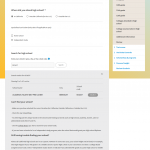
For other courses, see Reporting ATDP participation below.
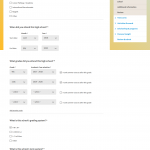
In the High Schools section, add ATDP as a California high school that you have attended. Search using the school code 051637 to find the correct listing, which will appear as ACADEMIC TALENT DEV PRG UC BER.
Accelerated Math and Language (LOTE) courses: ATDP students who completed a full-year-equivalent accelerated course in Mathematics or Language Other Than English (LOTE) in the summers after 7th or 8th grade may report them in the “7th & 8th grade” section of the UC application.
Summer after 8th grade: Students who took an A-G course (other than Math or LOTE) the summer after 8th grade must report it as though it were taken during the 9th grade school year. Please view and follow the instructions in this tutorial video put together by UCSB admissions. NOTE: Only A-G courses finished the summer after 9th grade through the summer after 11th grade are factored into the GPA calculated by UC on its application.
For summers after grade 9 and up, complete the High School Information form as follows:
- Specialized curriculum: Do not check any boxes
- When did you attend this high school?
- Start date: List the starting month (June for almost all courses) and year of the first A-G approved ATDP course listed on your Cumulative Educational Record.
- End date: List the ending month (July) and year of the last A-G approved ATDP course listed on your record.
- What grades did you attend this high school? List each grade level just prior to the summer you took an A-G approved ATDP course (i.e. 9th, 10th, and/or 11th). List the academic year of that grade. If you took an ATDP course in summer 2022, for example, select the 2021-2022 academic year. Select I took summer courses after this grade.
- What is this school’s grading system? If you are reporting final grades in the A or B range, check “A B C D F”. If you are reporting final grades of P or NP, check “Other” and enter “A B P NP”. Check both if you are reporting grades in both categories.
- What is this school’s term system? Check “Full year (1 final grade per year)”
- Is this the school you will graduate from? Check “No”
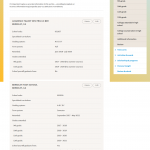
After you have added ATDP along with your normal high school(s), click I’ve finished adding high schools.
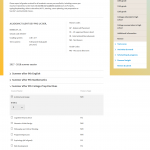
In each grade level section (9th, 10th and/or 11th grade) for which ATDP is listed, click Enter courses & grades for the summer session. (Do not enter any courses & grades for the academic year.) A-G approved ATDP courses are listed by subject requirement. Locate the course you took, and check the box next to it.
Enter your grades for each course:
- If you are prompted to enter the Grading System, choose “A B C D F” if you are reporting grades in the A or B range. Choose “Other” if you are reporting a P or NP. Selecting the appropriate grading system will ensure that A and B grades are calculated into your UC GPA.
- Under Grade 1, enter your final grade for that course based on the ATDP Final Evaluation you received or your Cumulative Educational Record.
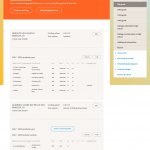
All A-G approved courses will appear in the list on the application. Note that not all currently approved courses were approved for all academic years. If your ATDP course is currently “In process for approval” you may, in accordance with UCOP guidance, manually enter it into your application. If you do so, mention the name of your course in the Additional Information section, and include the statement: “UC Berkeley ATDP will be submitting this course for retroactive approval next spring. I believe this course will be approved for A-G designation.”

When you are done entering courses for each grade level, you may see a warning that says “There are some errors below.” The application expects courses & grades for every term listed, but ATDP courses are not typically held during the academic year. Once you are sure all other courses & grades have been entered for each grade, you can click Skip the page for now.
Finally, in the Additional Information section, academic year terms for ATDP may be listed under “Missing high school courses.” Check the box that says I confirm that I have no courses to report. Then, in text box for Additional Comments, explain your situation. We recommend a simple sentence, such as:
I only attended courses with the Academic Talent Development Program at UC Berkeley during the summer.
If you are ultimately admitted to a UC/CSU campus, please see also Reporting your course to colleges for instructions on transmitting your ATDP records.
Reporting ATDP participation:
Discuss ATDP participation in your Personal Statement
List credited ATDP courses that appear on your high school transcript in Academic History as courses completed at your high school
Do NOT list under “Colleges Attended in High School” or the “College Courses Taken in High School” sections.
Include ATDP in Educational Preparation Programs (Activities & Awards, see example)
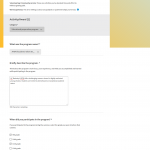
- Hours per week
Compressed four-week courses 10.5 hours per week All other two days/week courses 7 hours per week All other three days/week courses 10.5 hours per week - Weeks per year
Compressed four-week courses 4 weeks All other SD courses 6 weeks - Suggested brief description of the program
UC Berkeley’s ATDP offers challenging summer classes for highly motivated young scholars. Students are invited to attend based on exceptional academic talent. (Student, consider referring to your ATDP final narrative evaluation and grade in describing your accomplishments.)
Applying to California State University (CSU):
Find CSU’s online application here.
Find your Secondary Division Cumulative Educational Record in the RECORDS tab of your online account. Please refer to this document when adding ATDP courses to your CSU application.
Do NOT answer yes for the question “Have you taken and earned college credits through a community college or university?” in the Extended Profile/Educational Goal section unless you have taken courses at the college level (e.g. community college, UC Summer Sessions, etc.). ATDP courses are not college courses for registered UC Berkeley students; they are high school-level courses provided by ATDP as a supplemental program.
Reporting ATDP courses and grades:
You can ONLY report Secondary Division courses that:
- are A-G approved or pending approval (refer to your Cumulative Educational Record) AND
- you took following 9th grade (with the exception of full year-equivalent math or LOTE courses)
Accelerated Math and Language (LOTE) courses: ATDP students who completed a full-year-equivalent accelerated course in Mathematics or Language Other Than English (LOTE) in the summers following 7th or 8th grade may report them for those grade levels.
IMPORTANT: The CSU app differs from the UC app and from ATDP records, which both list the grade level you completed before each ATDP course. On the CSU app, however, you must enter the grade level you entered after each ATDP course. For example, if the ATDP record lists grade 11 and year 2024 next to the course, you will need enter “12th Grade” for the 2024-2025 school year on the CSU app.
In the High Schools Attended section, add ATDP as a California high school that you have attended.
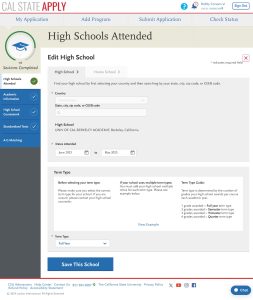

- Search for schools by city, entering Berkeley, CA to find the correct listing. ATDP will appear as “UNIV OF CAL BERKELEY ACADEMIC.” Make sure you see the school code
051637to double-check. - Dates Attended:
- Start date: List the starting month (June for almost all courses) and year of the first A-G approved ATDP course listed on your Cumulative Educational Record.
- End date: List the ending month (July) and the year following the last A-G approved ATDP course listed on your record. For example, if you only took one ATDP course in the summer of 2022, enter a start date in summer 2022 and an end date in summer 2023. This is necessary in order to list the 2022-2023 school year as the term, otherwise the grade level you provide (the grade level following your ATDP course) will not match its school year.
- Term Type: Select “Full Year.” (Only 1 grade is awarded each year for an ATDP summer course.)
- Review the information you entered, then click “Save This School” to continue.
- Under Graduation Status, be sure to list your high school. Do NOT select ATDP as the school from which you receive your high school diploma.
After you have added ATDP along with your normal high school(s), you can click Save and Continue.
In the High School Coursework section, add grade levels for each summer you attended ATDP and your grades for each course:
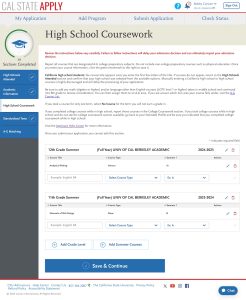
- Select “Add a Summer Grade Level,” not “Add a Grade Level.”
- Summer Grade Level: Select the grade level you entered following the summer of each ATDP course listed on your Cumulative Educational Record. Note that your record lists the grade level you completed that year. For example, if the ATDP record lists grade 11 next to the course, enter “12th Grade” on the CSU app.
- School: Select “(Full Year) UNIV OF CAL BERKELEY ACADEMIC.”
- Academic Year: Select the school year that matches the grade level you listed, which followed the summer you took each ATDP course. If the correct school year is not available, you may need to revise the start and end date of your ATDP attendance. (See “Dates Attended” above.)
- Click the green check box, then continue to enter each ATDP course that you took that summer in the fields below.
- Course Title: Begin typing the name of your ATDP course and it should appear in the drop down list. If your ATDP course is still pending A-G approval, enter the name manually.
- Course Type: If your ATDP course is listed as “UC Honors designated,” Honors should automatically be selected, or you can select it manually. In all other cases, select None. Do NOT select International Baccalaureate or Advanced Placement. (AP prep courses at ATDP are NOT officially College Board AP courses, but they are often UC Honors designated.)
- Enter your grade as shown on your ATDP record. These can be in the A range, B range, Pass (P), or No Pass (NP).
- Click the green check box, then repeat these steps for any additional summers at ATDP, or hit “Save and Continue” to continue.
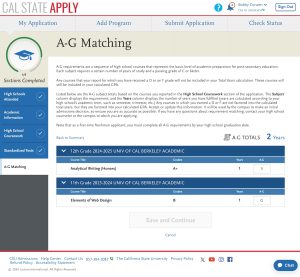
In the A-G Matching section, ensure that each A-G approved ATDP course is counted for its corresponding A-G subject:
- Each A-G approved ATDP course should automatically count for 1 of the corresponding subject requirement. You can click Update A-G Courses to double-check.
- If your ATDP course is still pending approval, you can add it to its corresponding subject requirement manually. Otherwise, it’s likely you won’t need to make any changes manually.
- Some ATDP courses are not eligible for A-G approval. Do NOT add any courses that show “None” under the A-G subject on your ATDP record to the A-G subject totals.
Note that ATDP is not listed in the “Education Programs” section. Only select “Yes” to the specific programs listed if you participated in them.
Applying through the Common App:
Find the online Common App here.
Discuss ATDP participation in your Personal Statement.
List credited ATDP courses that appear on your high school transcript in Courses & Grades (under “Other Courses”) as courses completed at your high school. Please note that not all colleges require students to list courses & grades; please refer to the Common App’s list.
- Under “Course Level,” select “Accelerated” for full-year equivalent courses, “Enriched” for half-year equivalent courses, or “AP” for AP-aligned courses
Do NOT list ATDP as a high school you attended; non-UC/CSU campuses may not accept ATDP educational records as a transcript!
Do NOT list under “Colleges & Universities”; ATDP courses are not UC Berkeley undergraduate courses.
DO Include ATDP under Activities
- Activity type: Academic
- Position/Leadership description: Student
- Organization name: UC Berkeley ATDP
- Please describe this activity, including what you accomplished and any recognition you received, etc.: ATDP offers accelerated and enrichment summer classes for highly motivated young scholars. (Student, consider referring to your ATDP final narrative evaluation and grade in describing your accomplishments.)
- Timing of participation: During school break
- For hours per week and weeks per year, refer to the tables below. If you enrolled at ATDP multiple years, list numbers for the year you spent the most time in class.
Hours per week
| Compressed four-week courses | 10.5 hours per week |
| All other two days/week courses | 7 hours per week |
| All other three days/week courses | 10.5 hours per week |
Weeks per year
| Compressed four-week courses | 4 weeks |
| All other SD courses | 6 weeks |
Applying to other colleges and universities:
It is important to note that ATDP is accredited through WASC as a Supplementary Education Program, and many ATDP courses are approved for the UC/CSU A-G admissions system. Colleges and universities outside of the UC/CSU system have their own admissions process, and they may or may not consider ATDP coursework.
For colleges and universities outside the UC/CSU system that do not use the Common App:
If your high school has accepted ATDP’s recommendation of credit, it may list your ATDP course on its high school transcript. In that case, you can report credited ATDP courses as courses completed at your high school.
You can discuss ATDP participation in your personal statement or application essays.
You can list ATDP as an activity or extracurricular if the application provides an appropriate section.
Do NOT list ATDP as a high school you attended; non-UC/CSU campuses may not accept ATDP educational records as a transcript!
Do NOT list ATDP as a college you have attended; ATDP courses are not UC Berkeley undergraduate courses.
